Garmin Dash Cam Tandem review: a dual-lens HD dash cam
A quality dash cam that records the driver and their passengers too

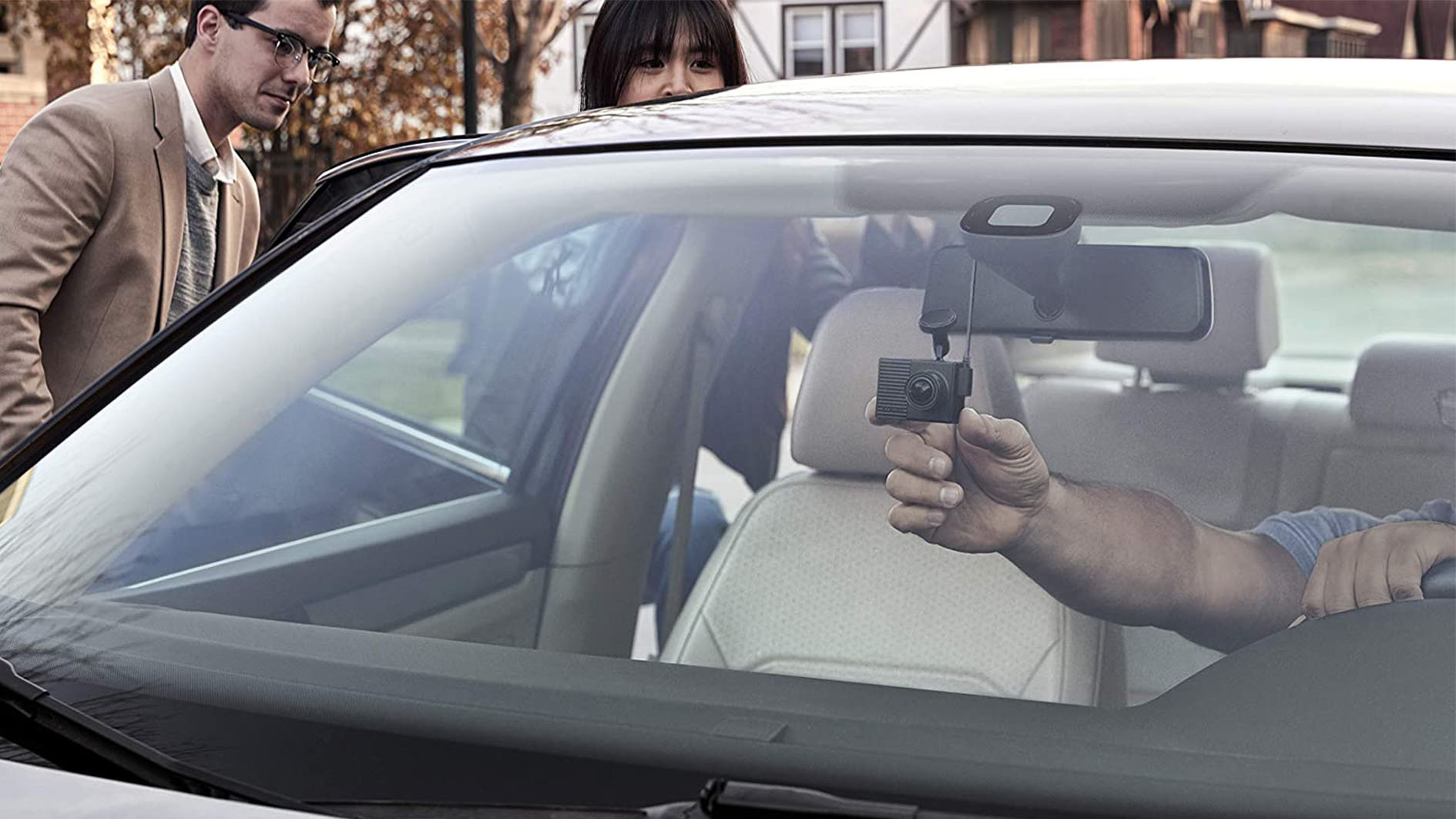
The Garmin Dash Cam Tandem is an HD dash cam with a twist, thanks to its second, rearwards-facing lens designed for capturing footage of your car interior. It’s a compact camera and a handy way to automatically record a more complete view of any collision.
-
+
One of very few dual-view dash cams
-
+
Useful interior view for taxi drivers
-
+
HDR video
-
+
Discreet design
-
+
Easy setup
-
-
High price
-
-
Potential passenger privacy concerns
-
-
Won’t be for everyone
-
-
Only 16GB card included
Why you can trust T3

We’re already big fans of Garmin’s Dash Cam series of, erm, dash cams. Unimaginative naming aside, these are top-notch cameras with good video quality, a simple but effective design, an application that is easy to use, and just the right amount of additional features.
The model you see here sticks to Garmin’s no-nonsense nomenclature, and since it has two cameras instead of one, it’s called the tandem. With views to the front and rear, the Tandem keeps a watchful eye on the road ahead like any other dash cam, but also simultaneously records the interior, creating extra evidence should you need to prove your innocence after a collision.
At £299.99, the Dash Cam Tandem isn’t cheap – you’re paying an extra £100 over Garmin’s Dash Cam 67W for that interior view – but for parents keen to keep a watchful eye on their car-borrowing children, or taxi drivers looking for extra protection from unruly passengers, it could be worth it. Is this one of the best dash cams out there? It could well be, and it's worth noting that it can be combined with other Garmin dash cams to become one of the best front and rear dash cams.

Garmin Dash Cam Tandem review: Design
Viewed from the front, the Dash Cam Tandem looks almost identical to Garmin’s Dash Cam 66W, with its black, matchbox design, rippled plastic body acting as a heat sink, and short windscreen mount attached with a ball-and-socket joint.
The lens protrudes further than that of the 67W, but only slightly and not enough to take up any extra space when attached to your windscreen. As with other Garmin dash cams, the Tandem comes with a coin-sized adhesive pad that sticks to your windscreen, then snaps to a short mount with a magnet. A spare magnet comes in the box so the camera can easily be swapped between two vehicles; when removed all that’s left on the windscreen is the coin-sized magnet. It’s a simple mechanism but one that works brilliantly.
Turn the Garmin Tandem around and the main difference between this and the 67W presents itself. A second, rear-facing lens. This one barely protrudes from the body at all and is sat next to a button that can be pressed for manually saving a portion of video – perhaps because you saw an accident ahead, but the camera’s g-sensor wasn’t triggered.
The bottom edge is home to a microSD card slot (with a 16GB card included) and a button for switching audio recording on and off. There’s a microUSB port for power on one side and a vent on the other, with a powered fan behind for additional cooling. The Garmin 66W runs hot with just one camera, so we’re not surprised to see additional cooling on the Tandem.
Get all the latest news, reviews, deals and buying guides on gorgeous tech, home and active products from the T3 experts
A choice of two USB cables (long and short) and included in the box, along with a 12V adapter for powering the dash cam from a light socket. This adapter has two USB ports, so you can power the dash cam and another device, like your smartphone, from the same outlet.
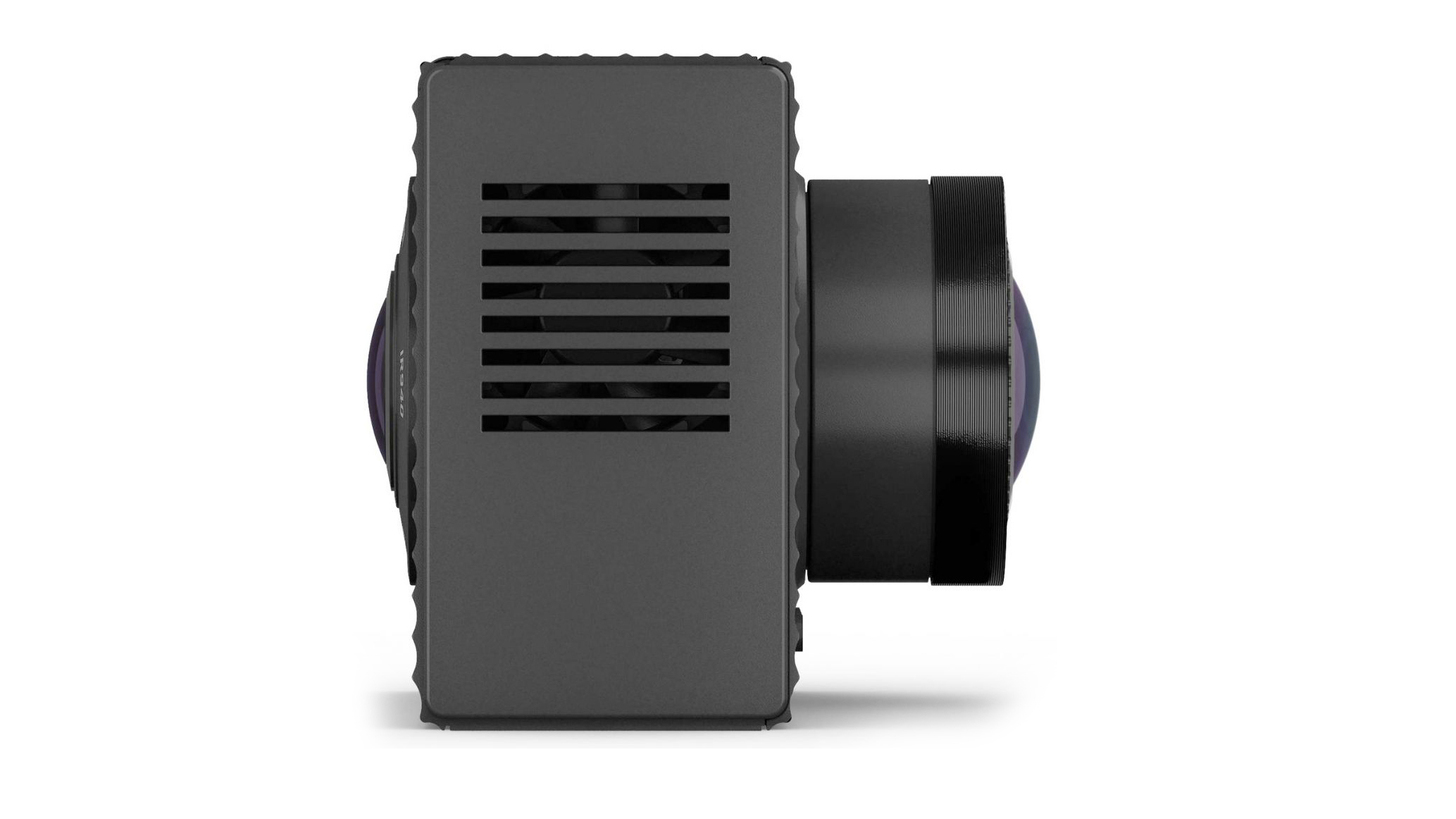
Garmin Dash Cam Tandem review: Features
The feature set of the Dash Cam Tandem reads much like that of the Garmin 55W and 66W. There’s GPS for accurate location, direction and speed data, HDR video recording for improved clarity in harsh lighting conditions, automatic incident detection, voice commands that work surprisingly well, and a parking mode that is compatible with a hardwiring cable sold separately.
The forward-facing camera records at up to 1440p resolution with HDR at 30 frames per second. This can be lowered to 1080p and thus take up less storage space, but since this doesn’t unlock a smoother 60fps shooting mode, we’d recommend sticking with the higher resolution for more detailed recordings. Both lenses have a 180-degree field-of-view, which is wider than most dash cams from other manufacturers. This provides a great view in both directions, but can cause the external footage to suffer from some fisheye distortion.
The rearwards-facing, interior camera is locked at the lower resolution of 720p HD at 30fps and lacks HDR. Both cameras can have their exposure value manually adjusted to between -0.1 and +0.1, although most users will find the default of zero is just fine. You might need to up the exposure of the interior camera for vehicles with smaller glasshouses and interiors with less natural light.
One feature that sets the Tandem apart from its Garmin stablemates is how the interior camera has an infrared night vision function called Nightglo. This mode is automatically switched on when ambient lighting falls below a certain level, and footage is recorded in black-and-white instead of colour. This helps to produce a clearer image of the driver and their passengers, as well as a view through the side windows and rear screen.
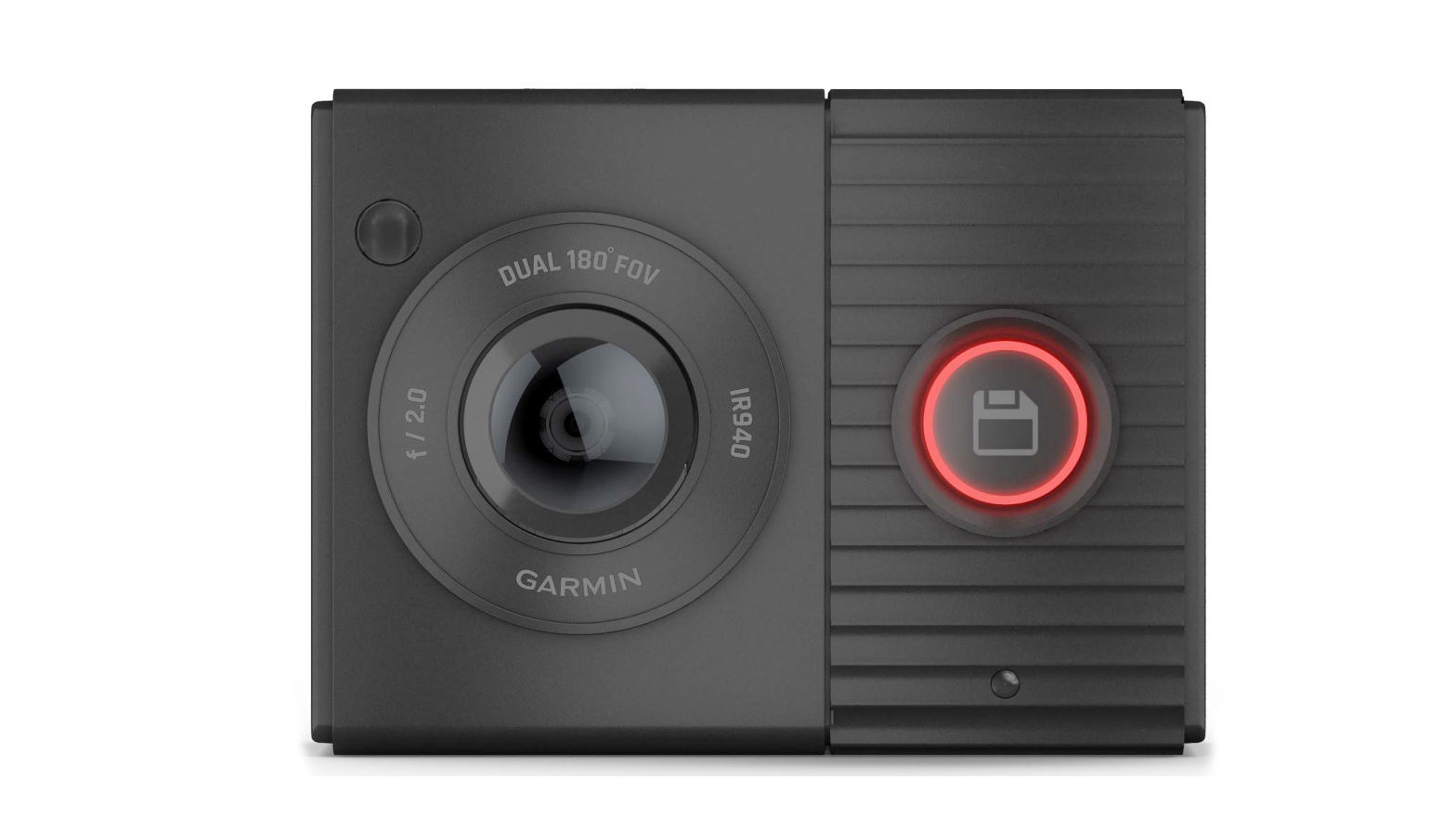
Garmin Dash Cam Tandem review: Video quality
Anyone who has used a recent Garmin dash cam will know what to expect here. The Tandem produces good quality video that is sharp and clear, but which, naturally, cannot match the detail of 4K footage captured by some of its rivals. That said, Full HD video will be plenty for the majority of buyers, resulting in footage that is sharp enough for seeing key details like road markings and vehicle registration plates.
Harsh lighting conditions are handled well thanks to the forward-facing camera’s HDR capability, while the interior camera has a wide enough view (180 degrees) to see the entire cabin, and 720p HD resolution is adequate at such a short distance. It’s useful knowing footage out of the side windows and rear screen will be saved when a collision is detected. That way, the driver can provide evidence against claims of them being distracted, for example.
A dedicated rear-facing camera mounted to the rear screen will provide a much clearer view of what’s going on behind your car, but there’s no harm in having additional footage to help protect you from blame.
Taxi drivers and chauffeurs will also find this view useful, as footage of misbehaving passengers can be saved to the camera’s microSD card. Just make sure your passengers are aware they are being recorded, and we recommend the Garmin Tandem’s audio recording is turned off (by pressing a button on its underside or speaking to the voice assistant).
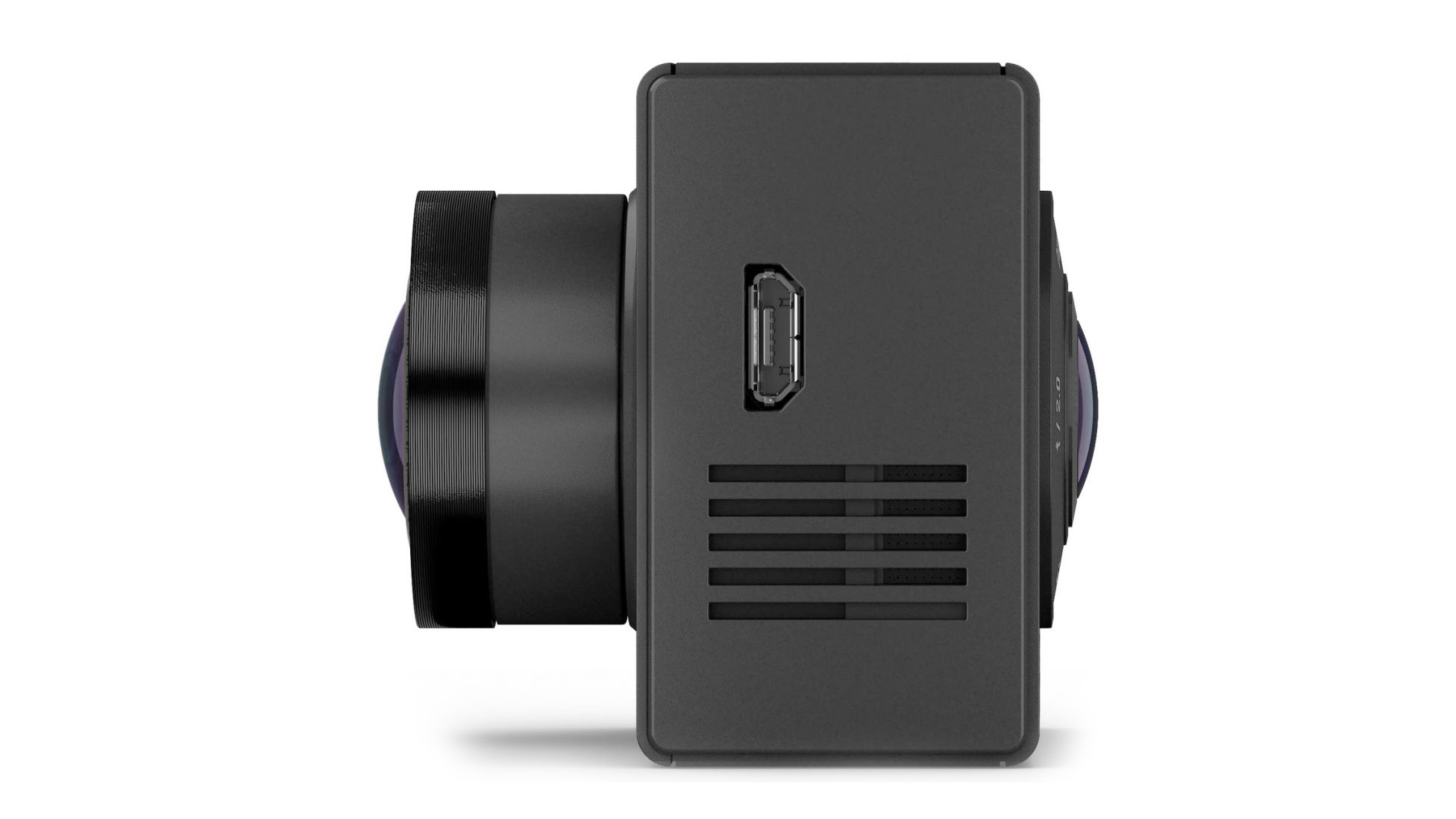
Garmin Dash Cam Tandem review: Software
Like its relatives, the Dash Cam Tandem works with Garmin’s Drive smartphone app, which is free for iOS and Android. This is a quick and useful way to check the view of the camera while setting it up in your car, and is where you’ll find options to adjust the settings and check for a software update.
Connecting to the dash cam over a combination of Bluetooth and Wi-Fi worked seamlessly for us, making it very easy to set up the camera, adjust settings and view saved video and photos. The app’s interface looks a little dated but it works perfectly well – and besides, once you have set up the camera there is little need to use the app again.
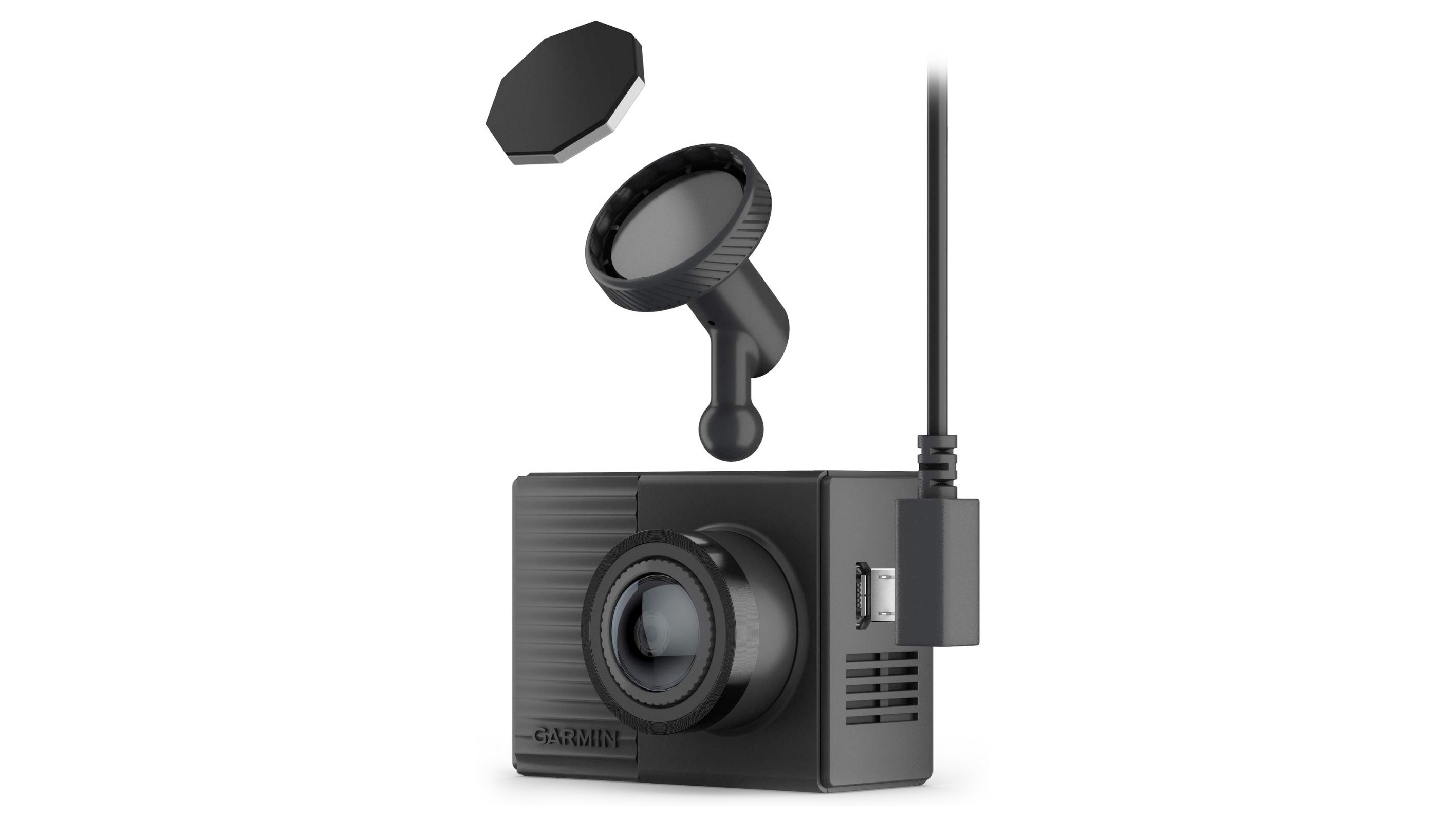
Garmin Dash Cam Tandem review: Verdict
Not everyone will want a dash cam pointing at your face the entire time, and doubtless, some passengers won’t want that either. But for those who want the extra peace-of-mind an interior view brings, the Garmin Dash Cam Tandem does an excellent job.
The view out front is just like that of other Garmin dash cams, and so too is the design, aesthetics, windscreen mount, voice recognition and smartphone app. The interior camera is only 720p HD, but does a fine job of recording extra evidence should you ever need to defend yourself after a collision. The infrared-powered night vision system, which switches on and off automatically, also works well, overcoming the darkest interiors.
With dedicated rear-facing cameras more difficult to fit due to their long cables requiring routing through the roof lining, the Garmin Tandem is a far simpler way to gain a greater view of your vehicle’s surroundings.
It isn’t cheap, at £100 more than Garmin’s best single-lens dash cams, but for those drivers who want an extra view, it’s hard to beat and is undoubtedly one of the best dash cams out there.
Alistair is a freelance automotive and technology journalist. He has bylines on esteemed sites such as the BBC, Forbes, TechRadar, and of best of all, T3, where he covers topics ranging from classic cars and men's lifestyle, to smart home technology, phones, electric cars, autonomy, Swiss watches, and much more besides. He is an experienced journalist, writing news, features, interviews and product reviews. If that didn't make him busy enough, he is also the co-host of the AutoChat podcast.
